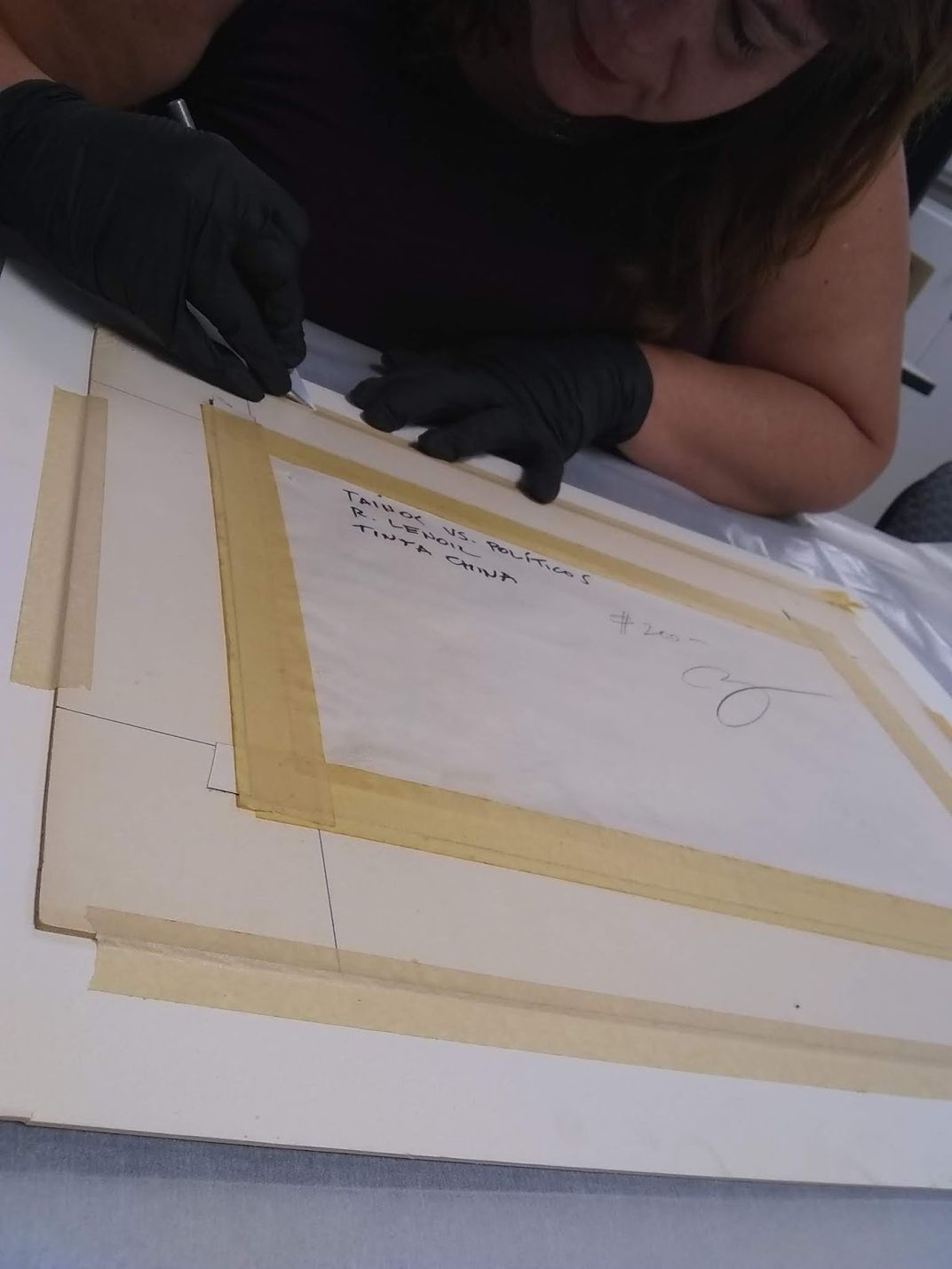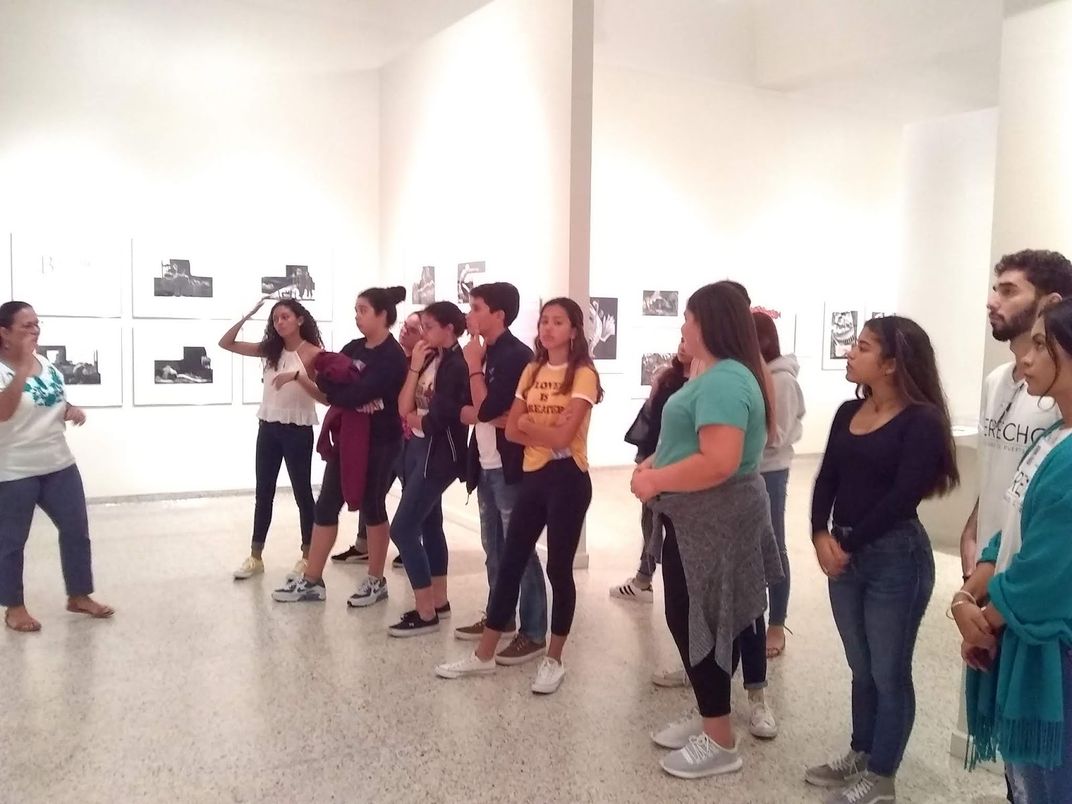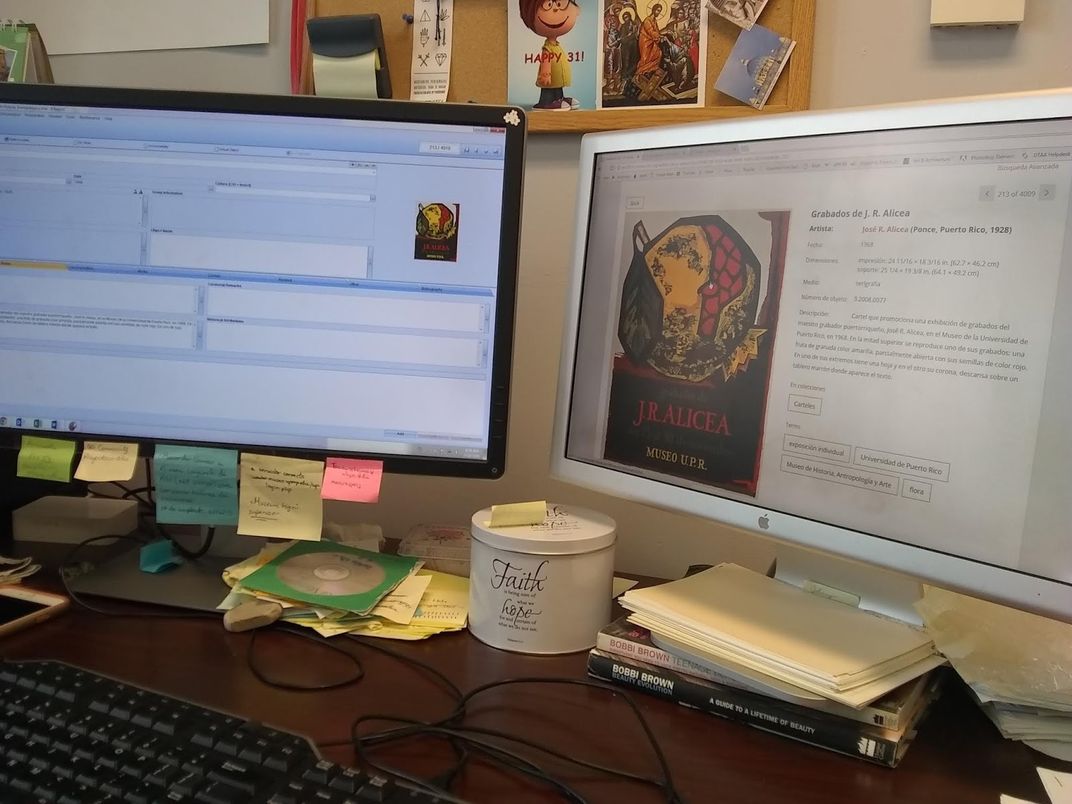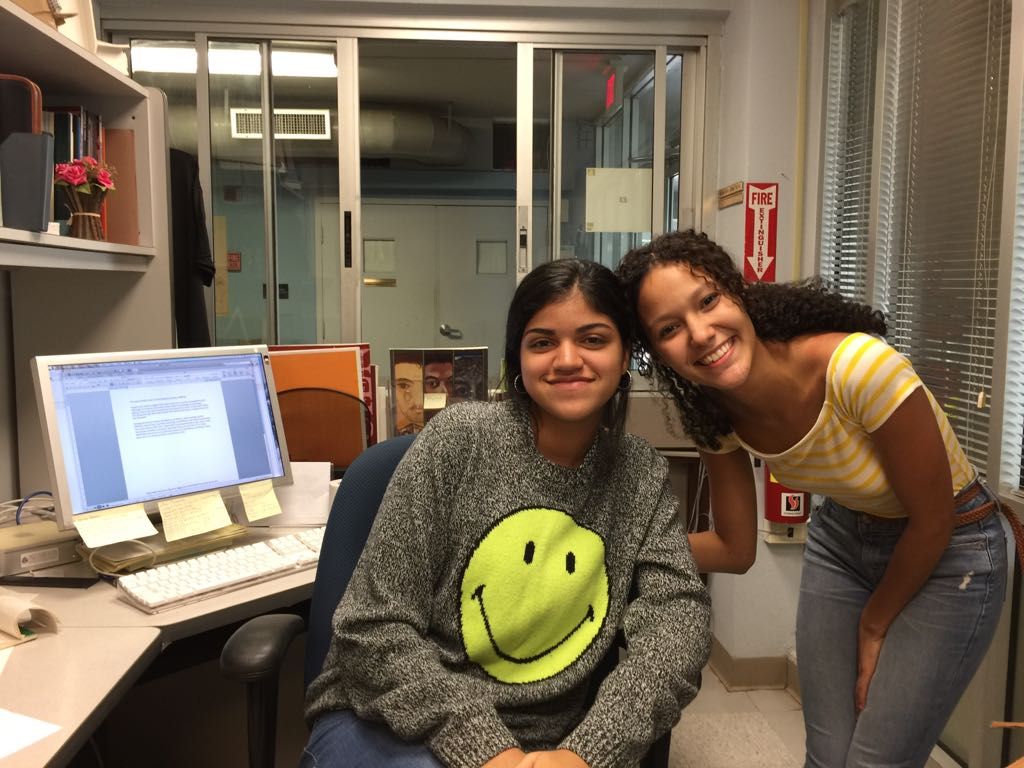NATIONAL MUSEUM OF THE AMERICAN LATINO
The Story within a Story
Amanda Robles shares her Young Ambassador internship experience.
/https://tf-cmsv2-smithsonianmag-media.s3.amazonaws.com/blogging/featured/Image_1_Archival_Work.jpg)
Throughout time, people have said, “a picture is worth a thousand words.” Although it is true, as seen when visitors take the challenge of analyzing a gallery, what is the story behind the one presented in front of their eyes? What was going through the artist’s mind? How did the painting or sculpture arrive at the museum?
During my second week at the Museum of History, Anthropology and Art (MHAA) at the University of Puerto Rico, Rio Piedras Campus, I learned the inner workings of exhibitions and realized what makes this story come to life!

It all started on Monday. I spent time understanding the proper ways to file documents such as articles, invitations, and pictures. These files, which I then came to realize, are used to create exhibitions and serve as tools for individuals interested in learning about a certain period of art or a specific artist. Visiting the Center for Documentation of Puerto Rican Art, located within the building, enlightened me on all the knowledge just waiting to be discovered and the resources available for those wanting to learn more. In addition, seeing a hands-on process on how to conserve a piece before it is shipped away made me conscious of the precautions needed to preserve different types of art.
Papo Colo is a determined artist I researched that defied the norm. He worked towards changing the way people viewed Latino art and gave exposure to new artists who didn't "fit" the mold that society had determined. His initiative Exit Art presented artists, such as Juan Sánchez, which today are recognized for their unique talents and perspectives.

Once Wednesday came, I learned the digitalization process for the museum's collection and the potential it has. MHAA is working on a project to make their collections accessible to those who are unable of traveling to Rio Piedras, where the museum is located, in an effort to not let distance limit the possibility to study the museum's collections. This enthusiastic project has already digitized 4,000 posters and is continuing to add more, including pieces other than posters, to its website!

Even though the week has brought nothing but interesting experiences, the biggest one came on Thursday; the day I gave my first tour. I couldn’t believe it! Saying the experience was rewarding would be an understatement; nothing compares with the fulfillment brought from using the skills acquired throughout the internship to engage the visitor. Thursday has been my favorite day yet and what better to finish the week than be responsible for duties related to the reception desk, meet a fellow Young Ambassador and finish your first woodcut piece! From tours to meeting a former Young Ambassador (from the year before mine!), to studying various artists and uncovering the works behind the scenes, it is true to say this has been the most astonishing week. I am looking forward to seeing what the rest of the internship has to offer. Until next time!

